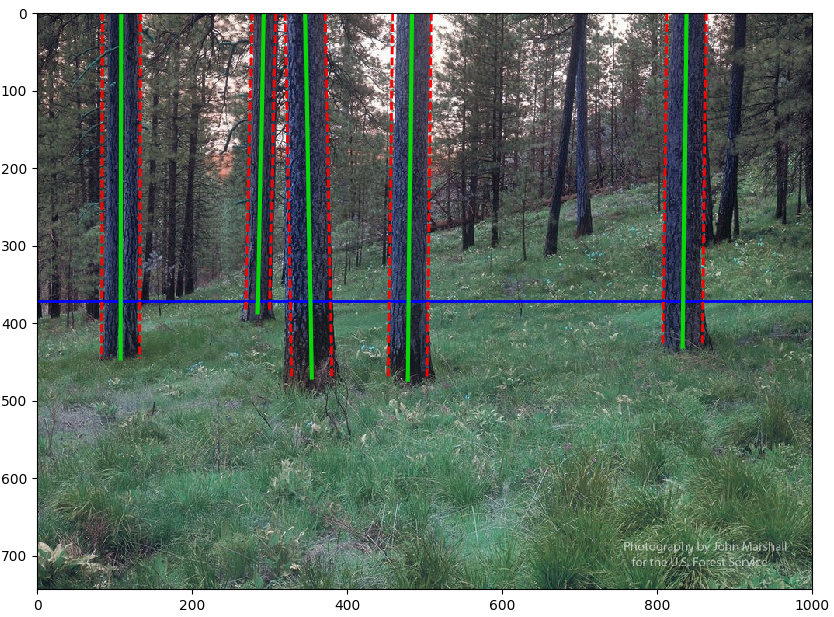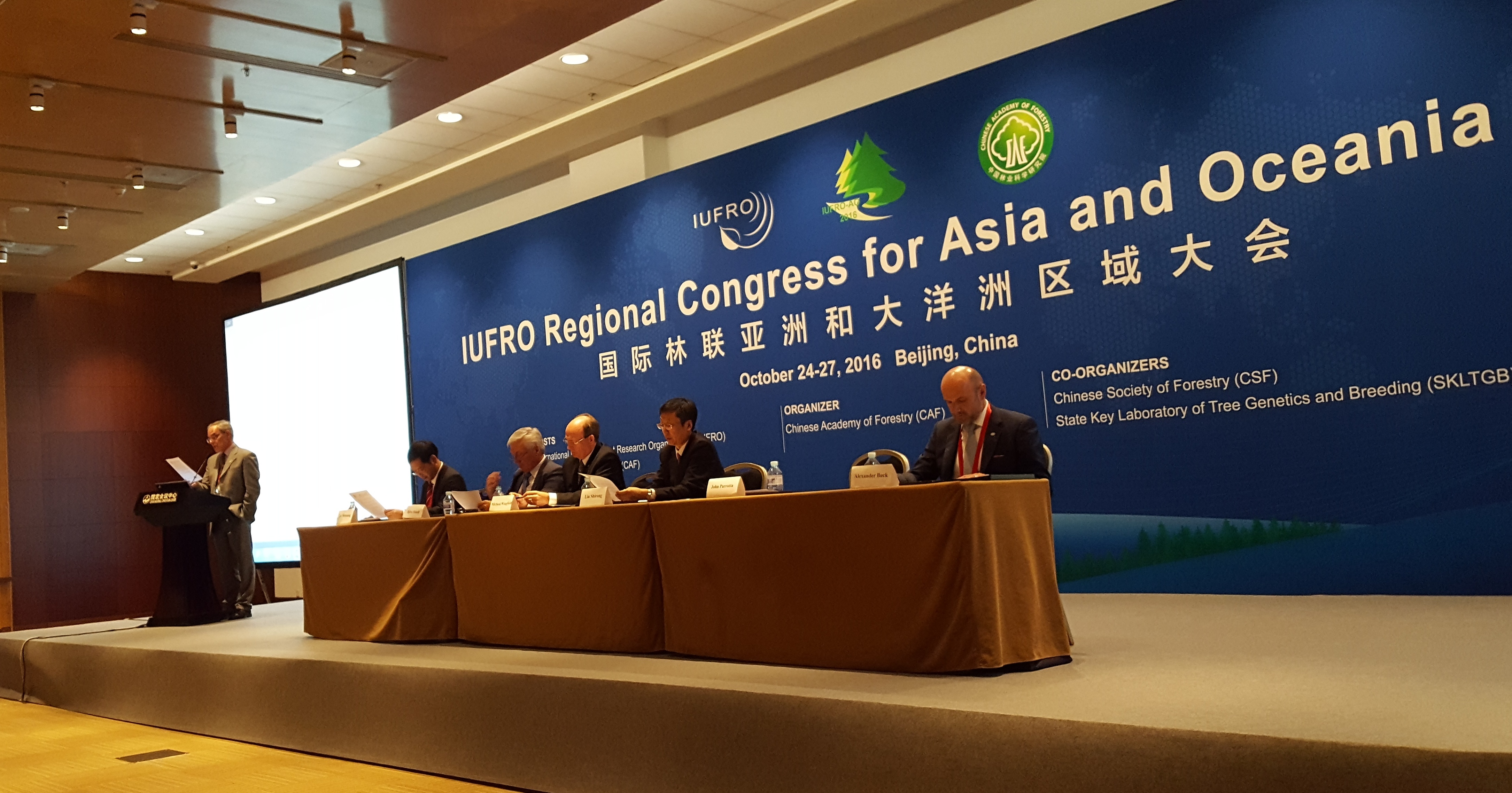Spotlight #80 – Becoming visible – non-timber forest products and a sustainable economy
Spotlight #80 – Becoming visible – non-timber forest products and a sustainable economy

One positive and largely overlooked outcome of the current coronavirus could be a stronger bioeconomy.
“I think the pandemic is going to spur the bioeconomy,” said Dr. James Chamberlain of the United States Forest Service, Southern Research Station in Blacksburg, Virginia, and Coordinator of IUFRO’s Unlocking the Bioeconomy and Non-Timber Forest Products Task Force.
Read more…“Harnessing Synergies between Agriculture and Forest Restoration’
“Harnessing Synergies between Agriculture and Forest Restoration’
Communities work together to restore forests – an example from Nepal
By Lila Nath Sharma, PhD
Blog from IUFRO Member Organization ForestAction Nepal
Jalthal forest is a 6,000 ha forested land in the densely populated region in the lowland of Southeastern Nepal. It is a remnant moist tropical forest with diverse ecosystems and habitats comprising swamps, rivers, ponds, hillocks and plain areas. It is an important biodiversity hotspot with several threatened floras and faunas including the Asiatic elephant and pangolin. The forest has unique assemblages of tropical and subtropical plant species found in the sub Himalayan tract. Floristic elements from different bio-geographical regions – Sino Himalayan, East Asian and Indian, for example – makes the forest diverse and unique.
The forest is an important source of environmental services including fresh water and multitudes of forest products for people living around the forest. It is currently managed by 22 Community Forest User Groups (CFUGs) and is an important livelihood source for over 80,000 people. In spite of high ecological and social significance, the Jalthal forest is subjected to multiple pressures. These include invasive species, human-wildlife conflict (particularly human-elephant), wildlife poaching, illegal felling of trees and timber focused forest management.
Read more…Congress Spotlight #64: Latest in forest science to be showcased in Brazil
Latest in forest science to be showcased in Brazil
IUFRO Spotlight issues up to September 2019 will primarily focus on the XXV IUFRO World Congress that will take place on 29 September – 5 October 2019 in Curitiba, Brazil.
Individual Congress sessions will be highlighted in order to draw attention to the broader Congress themes, the wide variety of topics that will be addressed at the Congress and their importance on a regional and global scale.
Visit the Congress website at http://iufro2019.com/ or https://www.iufro.org/events/congresses/2019/.
For the first Spotlight in this series we have invited Dr. Jerry Vanclay, Chair of the IUFRO World Congress Scientific Committee, to offer a sneak peak of the attractive and comprehensive technical program and talk about his personal expectations of the Congress.
————————–
Lives Saved by Forests
The interconnection of forests and people goes beyond forest management and forest products. This was dramatically illustrated during 2015 floods in Malawi when people climbed trees and were thereby saved from floods that killed over a hundred people in Traditional Authority Mlolo of the Nsanje District. Read more…
IUFRO Spotlight #57 – Transition in forest uses demands change in approaches

Wood chips being transported to a pulp mill. These chips represent the waste stream from a saw mill, but are becoming increasingly valuable as more and more uses for wood are developed. Photo by John Innes.
“The portfolio of goods and services from forests is now very different to that two decades ago; yet there is a disconnect between the institutional framework and these new forms of forest use, leading to efficiency, equity and legitimacy deficits,” said Dr. John Innes, Dean of the Faculty of Forestry at the University of British Columbia, Canada.
The changes – from forest planting and forest harvesting and operations, to forest use and forest products – occur at different levels. Today, forests produce a complex array of products from forest ecosystem services to timber and bio-products.
Market values are increasingly being attached to forest ecosystem services and this is changing the value systems associated with forestry. Read more…
IUFRO 125th Anniversary Congress Spotlight #52 – Building on tradition to plan for the future of forests

A 3D machine vision technology developed to detect and measure tree characteristics real-time during thinning operations. (Credit: Lucas Wells, Oregon State University)
“We’re trying to avoid throwing the baby out with the bathwater,” said Dr. Jens Peter Skovsgaard of the Swedish University of Agricultural Sciences in Alnarp, Sweden.
He was speaking about forestry operations and research and how change can be evolutionary rather than revolutionary. Dr. Skovsgaard is coordinator of a session entitled: Forestry “Classic” for the Future, at the IUFRO 125th Anniversary Congress in Freiburg, Germany in September. Read more…
IUFROAO2016 – The Beijing Declaration
IUFRO Regional Congress for Asia and Oceania 2016
24 – 27 October 2016, Beijing, China
Forests for Sustainable Development: The Role of Research
The Beijing Declaration

IUFRO Vice-President John Parrotta presenting the Beijing Declaration. Photo: Gerda Wolfrum, IUFRO Headquarters
Interview with Professor Zhang Shougong, Chinese Academy of Forestry (CAF)

Professor Zhang Shougong, Chinese Academy of Forestry (CAF)
Keynote speaker at the IUFRO Regional Congress for Asia and Oceania –
Forests for Sustainable Development: The Role of Research
Professor Zhang, the IUFRO Regional Congress for Asia and Oceania 2016 is jointly organized by IUFRO and the Chinese Academy of Forestry. This is the first Congress of its kind to be held in the region of Asia and Oceania and will offer an extraordinary opportunity for enhancing forest science cooperation. You are one of the leading scientists in silviculture and forest management in China and have a long experience in the establishment of planted forests on the one hand, and sustainable forest management on the other hand. The Congress will particularly focus on these two areas with its themes “Planted forests for fostering a greener economy”, and “Sustainable forest management for enhanced provision of ecosystem services”. Read more…
Congress Spotlight #18 – Consumers and Industry: Keen on Green
Consumers and Industry: Keen on Green
Looking toward the future is enough to make you, ahem, “turn green” with envy.
It’s all about a greener future.
That future and, more specifically, how it relates to the world’s forests will be one of many subjects discussed at the XXIV IUFRO World Congress in Salt Lake City, Utah, this fall.
A session there, entitled Forests and Forest Products for a Greener Future will look at how business and marketing will contribute to that goal.
Organized by Eric Hansen of Oregon State University, Tom Hammett of Virginia Tech and Birger Solberg of the Norwegian University of Life Sciences, it will cover a wide range of business and marketing theory topics that address how products and markets (timber and non-timber) can be expected to contribute to the greening effect.
New expert panel assesses linkages between forests and food security
Forests play a major role in achieving Millennium Development Goal 1 to eradicate extreme poverty and hunger and in striving for food security. Globally, millions of people depend on forests for their food security and nutrition, directly through the consumption or sale of foods produced in forests, indirectly through forest-related employment and income, forest ecosystem services, and forest biodiversity.
Current approaches to increasing food security tend to concentrate on agricultural solutions, ranging from intensification of agricultural production outside of forests to promoting agroforestry systems. Policy recommendations to establish a framework for promoting food security from forests, however, have so far been rather general and no framework addresses the relationship between forests and food security directly.
The “International Conference on Forests for Food Security and Nutrition”, held at FAO Headquarters in Rome in May 2013, inter alia conveyed the key message that forests, trees and agroforestry systems demand greater attention in strategies for food security and nutrition and in the fight against hunger. It also called for improved data collection at national and international levels.


